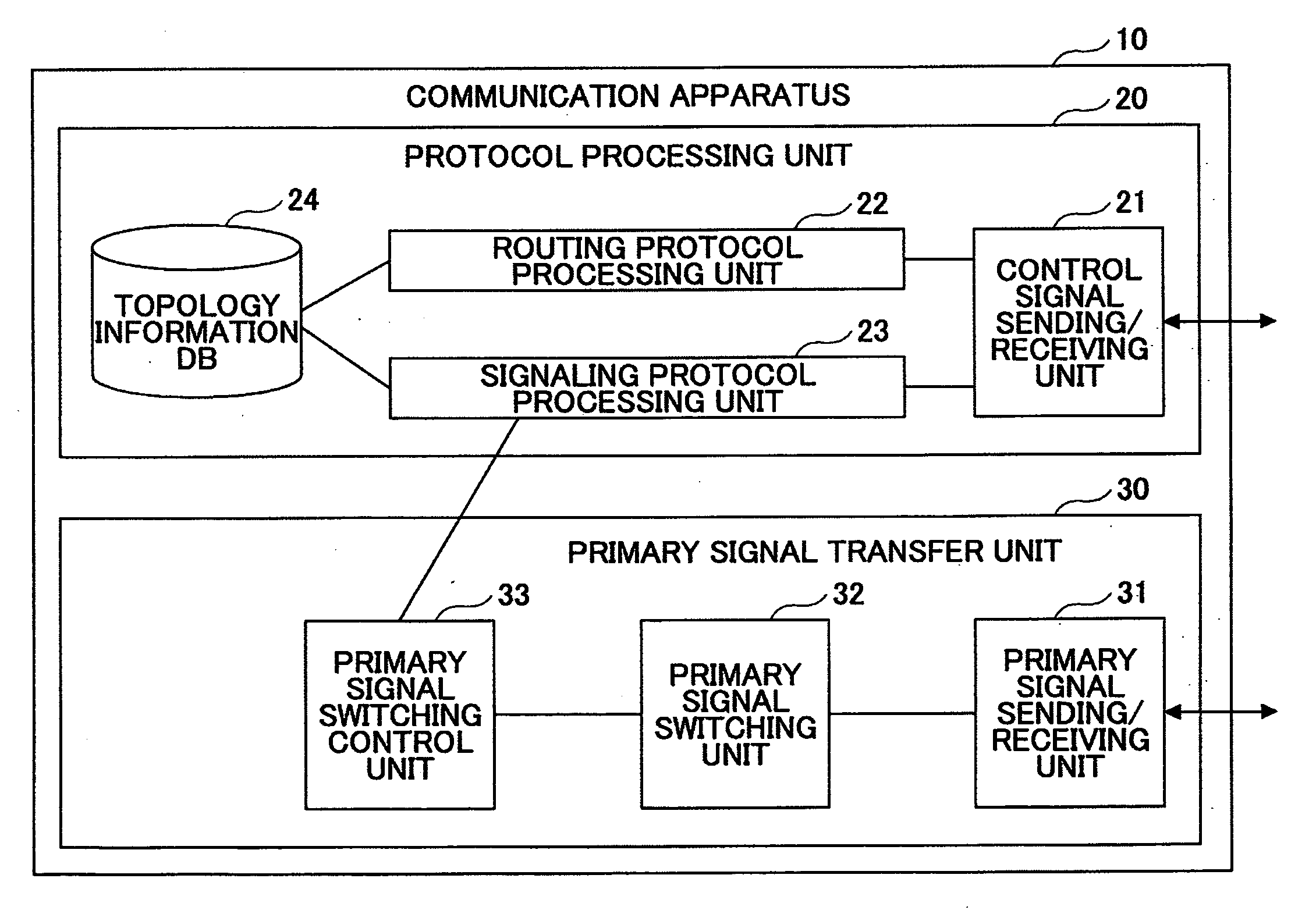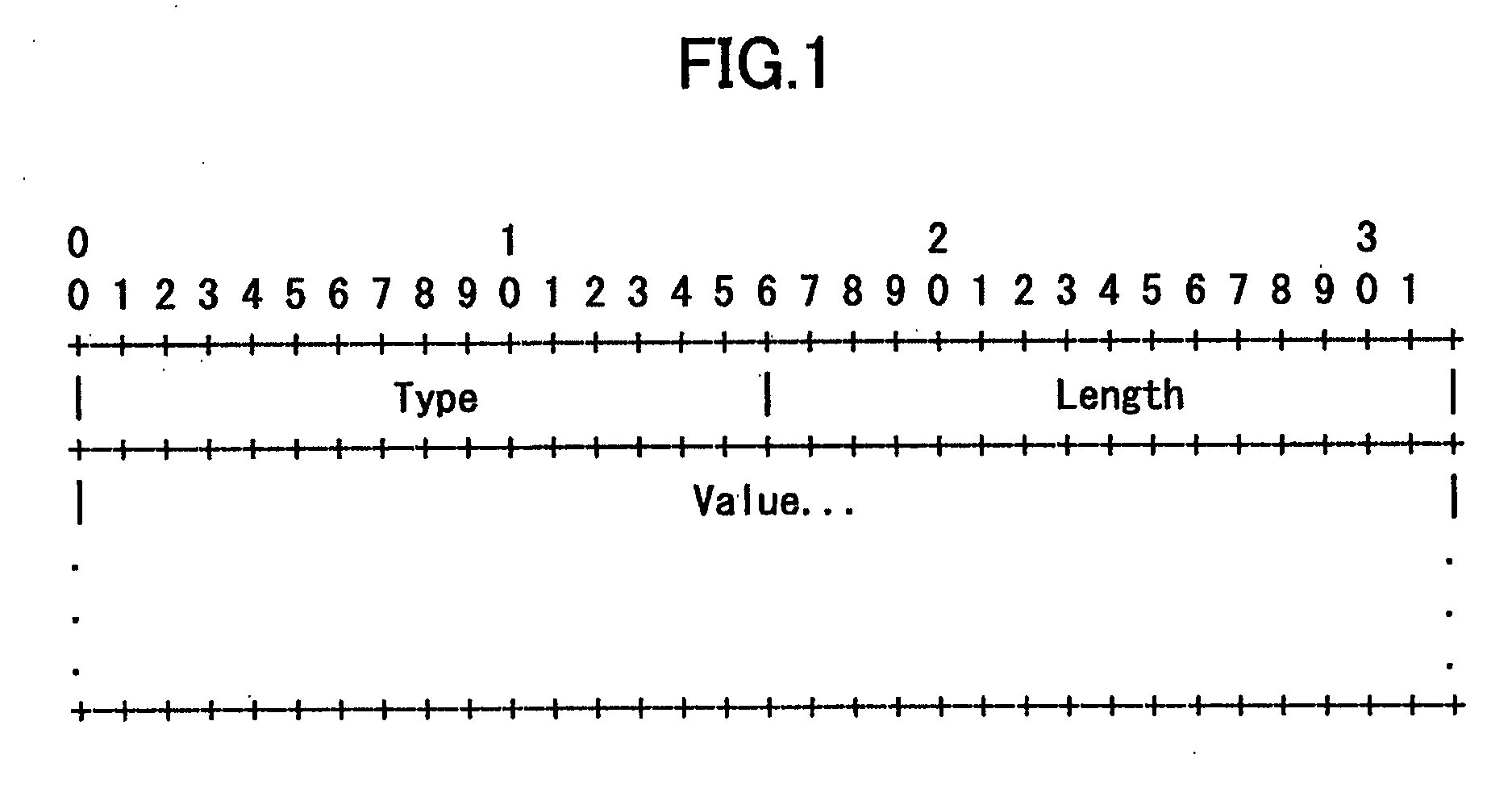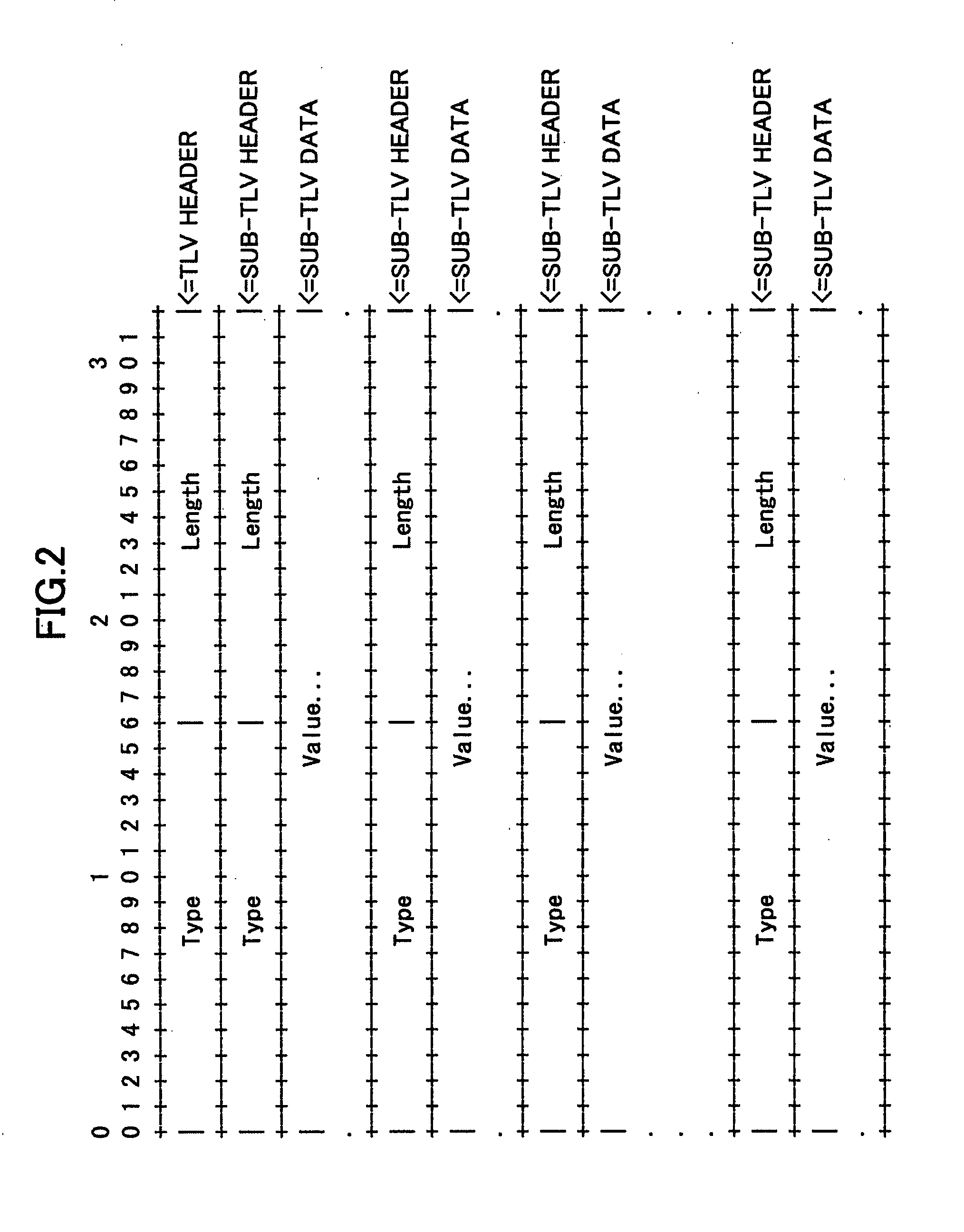Communication apparatus and protocol processing method
- Summary
- Abstract
- Description
- Claims
- Application Information
AI Technical Summary
Benefits of technology
Problems solved by technology
Method used
Image
Examples
first example
[0057]FIG. 9 is a flowchart showing a first exemplary link information sending process by the communication apparatus 10. This process is performed by the routing protocol processing unit 22 of the communication apparatus 10.
[0058]In step 1, the communication apparatus 10 generates a TLV frame. In step 2, the communication apparatus 10 generates a TLV of LSA type 10 (opaque LSA). In step 3, the communication apparatus 10 generates sub-TLV 1, sub-TLV 2, sub-TLV 3, sub-TLV 4, sub-TLV 5, sub-TLV 6, sub-TLV 7, sub-TLV 8, sub-TLV 9, sub-TLV 11, sub-TLV 14, sub-TLV 15, and sub-TLV 16. The number following each sub-TLV indicates the type of the sub-TLV. Steps 1 through 3 conform to the current OSPF-TE. It is not always necessary to generate all of the sub-TLVs mentioned above. In step 43, sub-TLVs required by the current OSPF-TE (mandatory sub-TLVs) and sub-TLVs necessary for the current process are generated.
[0059]In step 4, the communication apparatus 10 generates sub-TLV 9 (1) (the numb...
second example
[0081]A second exemplary link information sending process and a second exemplary link information receiving process by the communication apparatus 10 are described below. FIG. 14 is a flowchart showing a second exemplary link information sending process by the communication apparatus 10.
[0082]In step 41, the communication apparatus 10 generates a TLV frame. In step 42, the communication apparatus 10 generates a TLV of LSA type 10 (opaque LSA). In step 43, the communication apparatus 10 generates sub-TLV 1, sub-TLV 2, sub-TLV 3, sub-TLV 4, sub-TLV 5, sub-TLV 6, sub-TLV 7, sub-TLV 8, sub-TLV 9, sub-TLV 11, sub-TLV 14, sub-TLV 15, and sub-TLV 16. As in the first example, steps 41 through 43 conform to the current OSPF-TE. It is not always necessary to generate all of the sub-TLVs mentioned above. In step 43, sub-TLVs required by the current OSPF-TE and necessary for the current process are generated.
[0083]In step 44, as in step 4 of the first example, the communication apparatus 10 gen...
PUM
 Login to View More
Login to View More Abstract
Description
Claims
Application Information
 Login to View More
Login to View More - R&D
- Intellectual Property
- Life Sciences
- Materials
- Tech Scout
- Unparalleled Data Quality
- Higher Quality Content
- 60% Fewer Hallucinations
Browse by: Latest US Patents, China's latest patents, Technical Efficacy Thesaurus, Application Domain, Technology Topic, Popular Technical Reports.
© 2025 PatSnap. All rights reserved.Legal|Privacy policy|Modern Slavery Act Transparency Statement|Sitemap|About US| Contact US: help@patsnap.com



